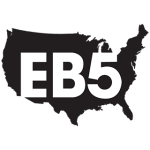
In July 2020, following the introduction of a controversial Beijing-backed national security law into the Hong Kong special autonomous region, President Trump signed the Executive Order on Hong Kong Normalization, which essentially eliminated any special treatment Hong Kong received as a separate nation from China. Hong Kong previously received separate treatment from China in terms of immigration, but with this executive order, Hong Kongers have lost this privilege and are now on the same level as Mainlanders. In the EB-5 Immigrant Investor Program, Hong Kong investors similarly face a new setback: they are now subject to the same extremely large EB-5 backlog as Mainlanders. Agencies impacted by the new policies were also instructed to update their regulations accordingly by July 30, 2020. And with that, immigration into the United States from Hong Kong has suddenly become far more difficult.
In effect, from a U.S. immigration perspective, Hong Kongers have become Chinese. Unless the U.S. government introduces new legislation addressing the special treatment of Hong Kongers or President Trump (or a future president) reverses the order, Hong Kongers have lost their special status within the EB-5 program, which is bad news for both Hong Kongers and Mainland Chinese EB-5 applicants. Chinese EB-5 investors must contend with massive backlogs that prevent thousands from moving forward with their journey toward U.S. permanent resident status.
Hong Kong EB-5 applicants are encouraged to contact their immigration attorneys to discuss their next steps in the face of the legislation changes. Any Hong Kong EB-5 investor in the system at the time of the legislation change would have foreseen a relatively fast EB-5 process at the time they applied, expecting to immigrate within two to three years, but now, they may be required to wait five or more years. The policy changes could cause severe disruption to these investors’ lives and plans and is, in any case, extremely disheartening for Hong Kong EB-5 investors.
Prospective EB-5 investors from Hong Kong should also plan their investments more carefully going forward, taking into account the long wait times they can expect from being mixed in with the Mainlanders. While EB-5 investor children are generally protected from “aging out”—i.e., turning 21—because the I-526 petition processing time is subtracted from the child’s age to determine eligibility, the longer a family must wait to obtain their U.S. green cards, the more benefits of life in the United States they miss out on. Even more significantly, if an EB-5 investor’s child marries or develops significant business ties in their home country before obtaining U.S. permanent residency, they may no longer be eligible for or interested in an EB-5 visa.
The policy changes are still new, so they may incur changes going forward. For now, Hong Kong EB-5 investors should consult with their immigration attorney and ensure they can still achieve their goals under the new regulations.
